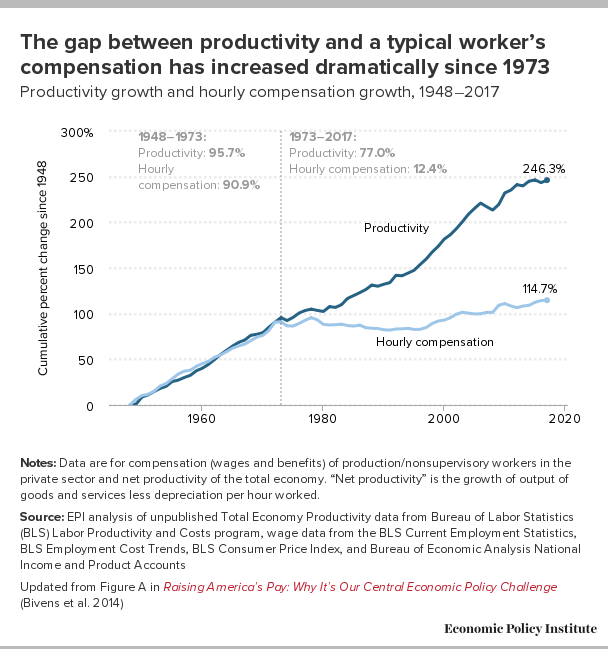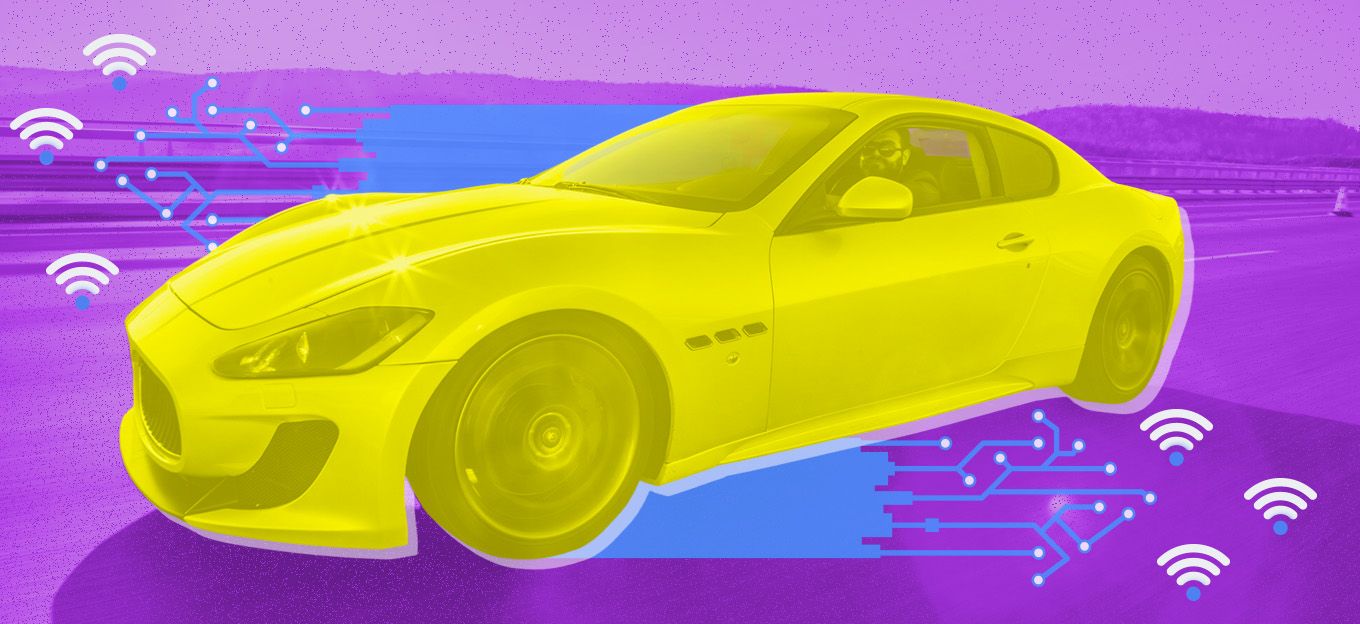How the Replacement of Blue-Collar Jobs by AI Will Impact the Economy
How the Replacement of Blue-Collar Jobs by AI Will Impact the Economy
- Last Updated: December 2, 2024
Sukhayl Niyazov
- Last Updated: December 2, 2024



Our world is on the verge of historically momentous changes. Technological advances will have all-encompassing implications for almost all human endeavors, from manufacturing and transportation to healthcare, education and communication. Emerging technologies and their implementation will have a profound impact on the current political system, society and labor market. The advent of AI and robotics will pose unprecedented challenges and offer an opportunity to reap tremendous economic and social benefits.
It's become conventional wisdom among economists to think that, due to the advancement of AI and robotics, manual labor and other blue-collar jobs will be mostly eliminated from the economy. Experts differ on the exact consequences of such a shift, and it's worth exploring both positive and negative sides of the current realignment to gain a better understanding of monumental shifts occurring in our society.
Before diving into this article, you may want to brush up on your AI and ML concepts:
2. Bursting the Jargon bubbles — Deep Learning
Foremost, as a result of the elimination of blue-collar jobs, the US economy will achieve previously unimaginable levels of productivity, for AI algorithms and automated manufacturing are much better at performing tasks than humans.
Increased throughput will make goods and services cheaper, leaving consumers with greater disposable income which they will then use to purchase more products, leading to the growth in consumption and demand, which will ultimately facilitate the creation of new jobs and economic growth.
AI Is Emerging
According to PwC’s analysis, by 2030, gains from AI implementation will be around $15.7 trillion, with most gains stemming from enhanced productivity and consumption-side effects. Overall, AI will add up to 14% to the American GDP by 2030. The research conducted by Accenture Research and Frontier Economics found that AI would boost US labor productivity by 35% and almost double growth rates from 2.6% to 4.6% by 2035.
In the short term, because American robots work as effectively as Chinese workers and because they don't demand higher wages, join labor unions and take vacations as American workers do, manufacturing will begin to return from cheap labor countries to the US. This will boost exports, encourage domestic investment and innovation and ultimately make the US a manufacturing hub. In the end, this will diminish the US trade deficit, eliminate the need to borrow money and solve one of the fundamental problems of the American economy.
In spite of significant job losses in the long run, on a short-term horizon, new jobs will be created in the place of eliminated blue-collar jobs. The study by the World Economic Forum expects that, by 2022, AI could create around 133 million jobs and eliminate about 75 million, resulting in a net gain of 58 million.
Job Losses Will Outpace Gains
It turns out that the loss of jobs by blue-collar workers will be more than offset by gains in more sophisticated and productive occupations like data scientists, software and data analysts and AI specialists. We'll get rid of tedious jobs and will instead focus on more creative and beneficial activities.
Applications of AI in fields previously dominated by humans will enable us to solve previously intractable problems such as climate change or make important discoveries in physics, biology, and chemistry that can be implemented to increase economic productivity and lead to further growth.
As a result of the replacement of humans by AI, we'll enhance our predictive powers which will yield tremendous benefits to American businesses, economy and society in fields like weather forecasts, predictions of natural disasters and many others.
Nevertheless, as with almost all things in our extremely complicated world, elimination of manual labor jobs from the economy isn't only expected to lead to positive economic reverberations, but also potentially disruptive repercussions that can shake the very foundations of the US labor markets, economy, society and even the conventional capitalist system itself.

The integration of AI and ML into an increasing number of jobs will yield many benefits in the short run, but, in the long run, its implications are much more ambiguous and may have devastating effects.
Even though studies show that we'll experience a net growth in the number of jobs, the devil is in the details.
Unlike technologies introduced by the Industrial Revolution (IR), which increased the overall number of jobs through deskilling (elimination of skilled labor by technologies operated by less skilled workers), the most recent upheaval , the introduction of information and communications technologies (ICT), has been defined by skill bias. Therefore, in recent decades in the US, more jobs that require a high level of expertise have been created, like programmers and data scientists, while eliminating the need for unskilled labor.
As a result of ICT, productivity has been steadily increasing in the US, but wages remained almost flat, and, in recent decades, income inequality has been growing dramatically (according to EPI, from 1973 to 2017, productivity has grown 6.2x more than pay).
A More Precarious Labour Market
This means that the labor market is becoming less flexible. During the first and second industrial revolutions, the labor market adapted to the fluctuations in society and the economy, and the overall number of jobs didn’t decrease. Nowadays, due to the skill biases of both ICT and AI, blue-collar workers who've been replaced by algorithms will unlikely be able to find new jobs because it'll be hard to turn former cashiers and taxi drivers into data scientists and programmers and people will be forced to reinvent themselves and find a new occupation each 10 -15 years due to the relentless paces of progress.
Even though, in the short run, lost jobs will be offset by the creation of new ones, over the long term (20–30 years) it will technically be possible to automate most of the jobs.
Kai-Fu Lee, a prominent expert on AI, in his book “AI Superpowers: China, Silicon Valley, and the New World Order” claimed that within 15 years it would be feasible to replace 40–50% of all the jobs in the US.
Radical Action Is Needed
If the US government doesn’t undertake radical actions, jobless people will experience severe economic damage and might organize violent anti-establishment protests. But, even with Universal Basic Income (UBI), for millions, the job loss will mean the loss of identity and purpose. Unemployed people tend to have higher rates of suicides and depressions. “Useless” class will become a source of potential civil unrest and societal instability, endangering the foundations of the economic, political and social system in the US.
However immense the challenges posed by the advancement of AI and robotics within countries, it's global inequality that will pose the greatest threat to global economic, social and political stability. In the past, owing to the availability of cheap labor, countries like China and South Korea were able to invigorate dramatic economic growth that eventually turned them into technological powerhouses.
Nowadays, however, revolutions in manufacturing will nullify this advantage, thereby depriving other poor countries of the opportunity to kick-start growth, while making their huge unemployed population a source of instability. Dictators will seek “splendid little wars” that will help them overcome domestic problems, thereby returning to an era of instability and interstate competition.
For the US this will mean a more active foreign policy, for Washington will endeavor to establish order and punish the violation of the law, as it did in 1990 when Iraq invaded Kuwait. Higher military expenditures will impose a significant burden on the economy and will hinder the effective resolution of domestic challenges.
Young people from these poor countries will then migrate into developed states like the US, Germany, Canada and the UK. We're already witnessing the formation of nationalist, anti-immigrant sentiments in developed countries, which culminated in the EU’s immigration crisis and President Trump’s desired wall on the border with Mexico. Global inequality will conduce millions to migrate, generating a violent backlash and sowing instability in the US and Europe.
All in all, because of the advancement of AI and subsequent job losses, the US economy will be able to adapt to the changing composition of the labor market for about 5–7 years and won't witness a full-scale job disruption. It will also considerably increase its productivity and rate of economic growth. However, with further advancements in AI and robotics technologies, market forces alone are unlikely to mitigate the implications of the new technological revolution, so the US government will have to implement reforms to prevent social instability.
Just as socialism emerged following the inability of the free market to satisfy the growing needs of the working class, it's highly likely that the disgruntled “useless” class will form a new movement with a new ideology that would completely redefine the balance of power in the US.
After all, the current American economic, political and social system was formed in the age of steam engines and electricity; now, in the age of AI and robotics, it needs to adapt to the realities of the 21st century in order to remain viable and be able to overcome mounting challenges.
The Most Comprehensive IoT Newsletter for Enterprises
Showcasing the highest-quality content, resources, news, and insights from the world of the Internet of Things. Subscribe to remain informed and up-to-date.
New Podcast Episode

How Drones and Telecom Enable Aerial IoT
Related Articles




